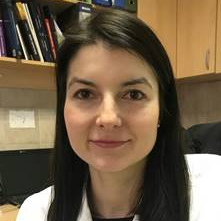Oral Health and Dental Restoration and Regeneration
A special issue of Bioengineering (ISSN 2306-5354). This special issue belongs to the section "Regenerative Engineering".
Deadline for manuscript submissions: 30 June 2024 | Viewed by 2553
Special Issue Editors
Interests: oral medicine; burning mouth syndrome; potentially malignant oral lesions; oral cancer
Special Issues, Collections and Topics in MDPI journals
Interests: endodontics; application of lasers in dental medicine; microbiology in endodontics; restorative dental medicine
Special Issues, Collections and Topics in MDPI journals
Special Issue Information
Dear Colleagues,
The development of new technology and materials in dental medicine has enabled new clinical protocols in the treatment of oral and dental diseases.
Lasers have been used in medicine and dentistry for decades as a stand-alone treatment method or as an adjunct to conventional therapy. Due to advancements in their application, they are used in various branches of dentistry, such as oral medicine, periodontology, oral surgery, orthodontics, implantology, restorative dentistry and pediatric dentistry. Although the literature is rich of studies evaluating the application of laser energy in different fields of dental medicine, there are still topics that should be researched in the future particularly in order to evaluate the clinical benefit of the laser use in the treatment of oral and dental diseases.
The development of new dental materials has an important role in the restauration of lost hard dental tissues and regeneration procedures. The new bioactive materials can interact with biological tissues changing their characteristics and properties. Some of them can cause activation of certain cells and molecules in the tissue and, thus, can provide reparative and regenerative reactions. Therefore, these biomaterials are considered to have “smart behavior”. They are used in almost all branches of dental medicine, from conservative dentistry to oral surgery and implantology.
The development of nanotechnology in dental medicine has enabled application of bioactive glasses, silver nanoparticles, zirconia nanoparticles in restorative dentistry and implantology. Special attention has been paid to the research of nanomaterials in the engineering of stem cells for regeneration of pulp, dentin, and periodontal ligament. This is a rather new field of research which is certainly the focus of future studies. In recent years, there has been an increasing number of new papers on the topic of regeneration; however, there are still many controversies and unclear results. New research with more patients will help to develop standardized protocols to treat a single diagnosis.
New requirements for preserving natural and intact teeth have shifted concept of clinical procedures towards minimally invasive dentistry. This is certainly possible due to the development and understanding of the principles of adhesion. Highly aesthetic dental materials used in restorative and prosthetic restorations are built from new structures based on nanoparticles. Adhesive cementation of these materials is possible due to the development of new molecules incorporated in adhesive systems and cements. However, these new generation of dental materials needs to be validated in laboratory and clinical studies to enable prediction of long-term results.
This Special Issue of Bioengineering will focus on these new technologies and materials that are important topics for future studies in dental medicine.
This Issue will be accepting contributions (both original articles and reviews) mainly centered on the following topics:
- New dental materials
- Laser therapy of in restorative dentistry, oral surgery and endodontics
- Regenerative dentistry in periodontology, implantology, endodontics
- Biomaterials in dental medicine
- Nano-technology in dental medicine
Dr. Božana Lončar Brzak
Dr. Ivona Bago
Guest Editors
Manuscript Submission Information
Manuscripts should be submitted online at www.mdpi.com by registering and logging in to this website. Once you are registered, click here to go to the submission form. Manuscripts can be submitted until the deadline. All submissions that pass pre-check are peer-reviewed. Accepted papers will be published continuously in the journal (as soon as accepted) and will be listed together on the special issue website. Research articles, review articles as well as short communications are invited. For planned papers, a title and short abstract (about 100 words) can be sent to the Editorial Office for announcement on this website.
Submitted manuscripts should not have been published previously, nor be under consideration for publication elsewhere (except conference proceedings papers). All manuscripts are thoroughly refereed through a single-blind peer-review process. A guide for authors and other relevant information for submission of manuscripts is available on the Instructions for Authors page. Bioengineering is an international peer-reviewed open access monthly journal published by MDPI.
Please visit the Instructions for Authors page before submitting a manuscript. The Article Processing Charge (APC) for publication in this open access journal is 2700 CHF (Swiss Francs). Submitted papers should be well formatted and use good English. Authors may use MDPI's English editing service prior to publication or during author revisions.
Keywords
- laser therapy
- regeneration
- biomaterials
- nanotechnology







